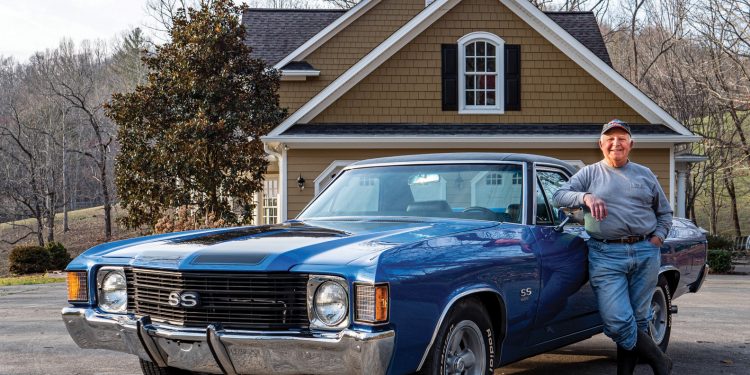Retired orthodontist Dr. Ed Jordan once enjoyed a classic car collection of 28 vehicles, ranging from models all the way back to the early 1900s.
“I got into collecting basically as a stress reliever,” he explains. “After returning home from my office and following dinner with the family, I would spend time working on my cars, often past midnight.
“Then, I would head to the bedroom, lay down and go to sleep immediately and get up the next morning fresh, meet the day with a smile, having gotten rid of every problem that existed the day before.
“It cleared my mind, and when I walked out of the garage, having done what I wanted to do, I was relaxed.”
There’s evidence, reported by physicians Mehmnet Oz and Mike Roizen, that Ed’s experience is confirmed by studies of people caring for things evoking calm and providing a sense of purpose, exercise for brain power, and entertainment.
Today he has just this handsome 1972 El Camino that he says he kept from his holdings because it was the most practical of all he once owned.
While he talks fondly of the memories of caring for them all in that garage that grew to more than 4,000 square feet in size, there may be reasons he kept this one beyond just its practicality.
It involved family and the fact that he restored it twice before making it, as he says, “just as I wanted it.”
The family involvement with the El Camino spanned almost a dozen years, during which his wife and kids used the vehicle that some have described as one that couldn’t decide if it was a car or a truck.
Ed insists that it is, in the way he and his family used it, really a truck. “They had to go to horse riding and jumping lessons twice a week, and that was the tow vehicle.”
The restoration journey developed in two phases. “It came as a GMC coupe utility/pickup for the 1971-77 model years sold by GMC Truck dealers,” he says. “It had an original 350-cubic- inch engine, air-conditioning, power brakes, and power steering.
“I bought a 1975 Caprice four-door hardtop that had a 402 engine and turbo 400 transmission that I swapped into it and restored it as an El Camino Super Sport.”
But, still wanting it to be more, he restored it a second time.
“Then, in the late ‘90s, I put a 454 engine in it to make it as I had originally wanted, including finding the perfect color for it – a Cadillac blue.”
All the while, relieving stress and gaining the relaxation that made him ready to face whatever came his way.
Although the El Camino may be the most-remembered version of a truck built on a station wagon platform, the concept of such a vehicle actually began in the United States in 1920 as a Chevrolet Roadster Utility.
The first generation of the “modern” version was introduced in 1959. By 1968, a third generation like Ed’s was launched with a longer body based on the Chevelle station wagon. The interior was revamped with cloth and vinyl or all-vinyl bench seats and deep-twist carpeting.
El Camino production came to a conclusion with the 1987 model. But, its history includes, according to AutoInfluence.com, a rumor that Mattel’s designer spotted one in the company’s parking lot and reportedly commented, “Those are some hot wheels,” coining the new name for Mattel’s line of toy cars.
Dr. Jordan, now enjoying his retirement years in the mountains of Western North Carolina, reminiscing about his once big collection of classics, including his 1919 Jurden Touring Car, a 1925 Rolls Royce Roadster, a 1930 Packard and a 1956 Corvette.
Today those and the rest of them are in the hands of new owners, but the “practical” El Camino with its family connections and history of multiple restorations, still belongs to Ed.
















